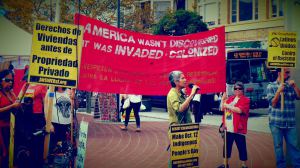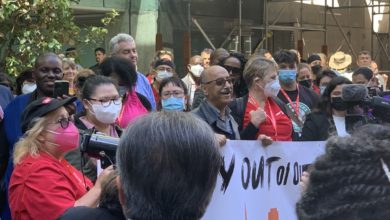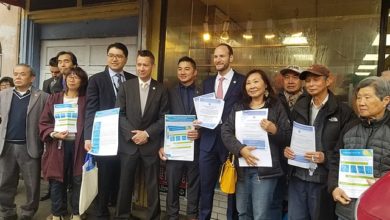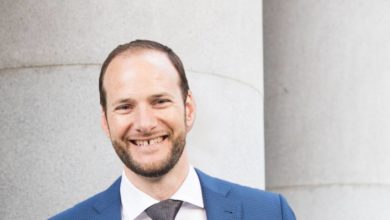Photo: Colonizers of yesterday and today

On October 10, the ANSWER Coalition held a speak-out in San Francisco’s Mission District to condemn the unfolding crisis of rapid gentrification in the city’s poor and working communities. As a commemoration of Indigenous People’s Day, a holiday not recognized by the city, the speak-out took the theme of “Resist the Colonizers of Yesterday and Today!” and planned to “remember those who were here first and follow their example of resisting the colonizers of today. From Columbus to Mayor Lee to Donald Trump, poor and working people, the oppressed and dispossessed, continue to be assaulted by those who claim to own where we live and the fruits of our labor.”
The Mission District is the city’s focal point for evictions and displacement of residents, and Mazda Majidi of ANSWER tied the colonization of the Mission to that of Columbus: “The Spanish monarchy and the rest of the monarchies in Europe thought that all this land was too good to be left to the Native people. They wanted it for themselves and to steal the resources, the land, everything…The big banks, the corporations, and the tech companies see San Francisco as too good of a land to be left for working people, Black and Brown people, and oppressed communities, so they just want to gentrify it, evict people, and push them out.”
Tina Landis of the Party for Socialism and Liberation justified labeling Mayor Ed Lee as a colonizer, revealing how he had “held a meeting last month with the big developers, and his comments showed clearly whose side he is on. He said, ‘It’s a good time for San Francisco: people are working, cranes are up, I can see them. There are some people who are fearful of change being too fast for them. I believe in change, there’s so much going on that’s so positive.’ This is our mayor; he doesn’t care about us in our communities being pushed out, struggling and having to work three jobs to pay rent.”
Richard Becker, Western Regional Coordinator of the ANSWER Coalition, described the Mayor’s practice of corporate giveaways, noting how he “decided to give Twitter a tax break for 10 years, and that was supposed to be good for the economy and good for all of us. It’s been especially bad for this community. By giving that tax break to Twitter and encouraging Twitter to come here, they brought in people who could pay rent that was three times what the residents here were paying…in this system the rights of private property and the rights of profit come before people.”
Vianney Casas, a local activist and poet from Tijuana, read a poem in which she described feeling torn between living in a dangerous Mexico and fighting other forms of injustice in the United States, which she referred to as “Gringolandia.” In an excerpt from the poem, she said, “I am Vianney and I don’t know which road to take. Should I take the one to Mexico where 6.4 women are murdered every day, or should I travel to Gringolandia, where there is only nine days this year where police haven’t killed a Black human
being…In Gringolandia my mother was arrested and deported because she couldn’t speak proper English and she had no money.”
With the influx of capital and the rise of the so-called “application economy” centering in San Francisco, the new Wall Street of the West has no patience for the needs of poor and working people. Whether it’s Mayor Lee granting concessions to luxury developers and hiding when anti-gentrification protests come knocking at his door, or as Donald Trump and members of both ruling-class parties make the racist call for the end to the cities’ “sanctuary” status for undocumented immigrants, it is clear that it is time for revolutionary change. Gentrification directly results from the capitalist economic system, and even with the perceived association of San Francisco as a safe-zone of progressivism, the city is in actuality a battleground of class warfare.
But while the city’s elites morph communities into playgrounds of the rich, the radical history of the Bay Area continues to manifest in growing movements against gentrification and capitalism itself. Face-saving solutions from the city’s liberals have turned Columbus Day into “Italian Heritage Day,” and any housing legislation that is proposed aims at protecting the interests of “good” landlords. But Columbus cannot be separated from genocide. Landlordism cannot be separated from the criminality of profiting off the sheltering of human beings. The Indigenous struggle of Native Americans to resist colonization and shed their oppressors reminds us that capitalism did not always govern this land. Their courage in the face of centuries of brutality inspires hope that the spirit of righteous rebellion will not be extinguished.





